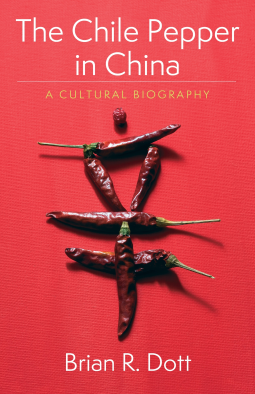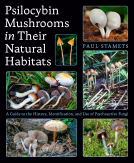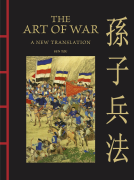
The Chile Pepper in China
A Cultural Biography
by Brian R. Dott
This title was previously available on NetGalley and is now archived.
Send NetGalley books directly to your Kindle or Kindle app
1
To read on a Kindle or Kindle app, please add kindle@netgalley.com as an approved email address to receive files in your Amazon account. Click here for step-by-step instructions.
2
Also find your Kindle email address within your Amazon account, and enter it here.
Pub Date May 12 2020 | Archive Date Jul 07 2020
Talking about this book? Use #TheChilePepperinChina #NetGalley. More hashtag tips!
Description
Brian R. Dott explores how the nonnative chile went from obscurity to ubiquity in China, influencing not just cuisine but also medicine, language, and cultural identity. He details how its versatility became essential to a variety of regional cuisines and swayed both elite and popular medical and healing practices. Dott tracks the cultural meaning of the chile across a wide swath of literary texts and artworks, revealing how the spread of chiles fundamentally altered the meaning of the term spicy. He emphasizes the intersection between food and gender, tracing the chile as a symbol for both male virility and female passion. Integrating food studies, the history of medicine, and Chinese cultural history, The Chile Pepper in China sheds new light on the piquant cultural impact of a potent plant and raises broader questions regarding notions of authenticity in cuisine.
A Note From the Publisher
part of the Arts and Traditions of the Table: Perspectives on Culinary History series
Advance Praise
"A learned as well as lively book with many surprises. How chile peppers came to China from the New World just starts a story involving taste, regionalism, adaptation and folklore. Chiles were key to Chinese cuisine's subtlety and variety, and not just in Sichuan and Hunan either."
-Paul Freedman, Yale University
Available Editions
| EDITION | Other Format |
| ISBN | 9780231195324 |
| PRICE | $32.00 (USD) |
Featured Reviews
Brian Dott’s The Chile Pepper in China: A Cultural Biography, due out from Columbia University Press in May of 2020.
Although I have some hesitations about this book, and I’ll talk about them a bit at the end, I have to say that the book’s subject is far more fascinating that I was imagining. I saw that Dott’s book was coming out just a few weeks after having a great conversation with my husband about the Columbian Exchange—that is, the movement of flora and fauna, or disease, etc. between the new world and the old after colonization began in the Americas. Historians usually talk about the movement of foods like maize (or corn), tomatoes, squash, and potatoes. As I was writing a lecture for an online history class that I was planning to teach to international students, David asked me if the chili pepper was also part of the Columbian Exchange. I hesitated. Yes, I’d always thought of peppers in general as a food indigenous to the Americas. But that couldn’t be true, could it? Was it really possible that the various cuisines throughout East Asia and South Asia didn’t have access to chili peppers until the 16th century? Surely not.
Well, it didn’t take long to figure out he was right. And honestly I felt pretty stupid not to have been aware of the fact earlier. And then this book popped up, The Chile Pepper in China, and I found out I was not the only clueless person. In the introduction, the author points out that, as he writes, “Today chiles are so common in China that many Chinese assume they are native.” After he started his research for the book, he presented some of his thoughts to a group of Chinese historians, who were equally taken aback--“astounded,” as he says, “that chiles are not indigenous.”
Brian Dott starts out by suggesting that unlike many spices or foods that entered into global trade, chile peppers were likely to have been brought over from the Americas only because multiethnic crews aboard ships has packed dried chiles to season their food as they travelled aboard ships. Just a few leftover seeds were all that were needed to bring the plants to new lands. Unlike many items of trade, the chile pepper grew easily in a great variety of soils and temperature zones. And unlike even such foods as the native Szechuan pepper, the chile plants were small and easy to grown in individual gardens. This fact had the consequence that it could not be a money maker for anyone—so it was not embraced at the beginning by elites who sought to engage in financial pursuits. But it did spread widely within non-elite communities, both as a spice and as a vegetable.
Although chili did not automatically fit perfectly into the preexisting Chinese system of flavors, and of elements, it was inserted in a compelling way—and that allowed rapid integration of the chili into culture more broadly. Dott explains how it was embraced by some and not by others, and how it became such an essential part of many Chinese culinary traditions. But some of the most interesting parts of Dott’s book discuss not the culinary use of chiles but the degree to which hot peppers became integral to Chinese medicine, to common language, to artistic representations (including important literature), and to symbols of revolution—whether a revolution in gender ideology or a political/military revolution.
In short, the author of this book wants to know how the chile become so central to Chinese culture at large? One of the author’s main questions is how this foreign plant became not only ubiquitous in many regions of China but how it became seen as, or believed to be, indigenous, or at least authentic. Dott has a pretty fancy way of saying the same thing: “constructed authenticity does not necessarily correlate with [true] indigeneity.”
As I said, this is a fascinating topic and Dott pulls out some fascinating aspects of the topic by looking thoughtfully at some relatively unconventional sources. But the book suffers from significant repetition of ideas and some pretty weak organization, especially at the level of the chapter. But despite its limitations, this book is a fascinating look at how global trade and a sense of local or national culture can coexist. The author makes no claims for broader applicability of his work, but I think his analysis of the process of constructing authenticity might be useful in many other works of cultural history, or other cultural analysis.
 Jason F, Reviewer
Jason F, Reviewer
The Chile Pepper in China by Brian R. Dott is a non-fiction history of how chile peppers, a plant native to the Americas, became ubiquitous in China. Dott, an associate professor at Whitman College leads readers through the complicated and sometimes unclear history of how this spicy fruit came to hold such significance in Chinese cuisine, medicine, culture, and politics.
It is important to note that The Chile Pepper in China is an academic, non-fiction book. The book therefore spends as much time walking the reader through its methodology and sources as it does telling the chile pepper’s actual history. While much of those parts of the book are equally interesting, not all of it will feel germane to the casual reader. This is by no means a negative attribute of the book, especially since these walkthroughs are well-researched and well-explained. In fact, The Chile Pepper in China is a book that can be easily understood and enjoyed by casual readers, something not all academic non-fiction books can say.
For anybody with interests in learning about non-America cooking, medicine, or even language, The Chile Pepper in China is an excellent resource for learning about an array of Chinese practices. Dott explains how Chinese systems for classifying foods and medicines were intertwined with language in ways that are easily understood in the English language for an American not well acquainted with the concepts. I do wish that some of the explanations of chile peppers’ use as medicine were discussed in a modern context. There was ample discussion of how capsaicin, the chemical that makes chilis spicey, was used as preventatives and treatments for many types of illness. I was just left so curious about the ways Dott explained food and medicine as virtually one and the same that I found myself wanting to understand if its uses have evolved since the 1600s.
The way the book breaks down Chinese words and phrases is also really compelling. The book is very careful to make clear that China is not a singular culture and that in different groups and regions across time periods people have held different and sometimes contradictory beliefs. I enjoyed seeing how the word for and words used to describe chile peppers evolved and eventually landed on “the foreign pepper.”
Beyond being a well-researched history, The Chile Pepper in China does an excellent job demonstrating how cultural symbols, even when recognizable by an entire population like the chile pepper is, do not always hold the same symbolic meanings for everybody. The book’s latter chapters demonstrate this in both classic Chinese literature and in contemporary politics. For example, the chile represents the trope of the “spicy girl,” a somewhat aspirational and attractive quality of being bold, passionate, and firey. Meanwhile, the pepper has been used as a warning against that very inversion of traditional gender roles.In more recent times, chile peppers in China have come to be associated with revolution and even Mao himself.
I particularly appreciate The Chile Pepper in China as a reminder that culture is constantly evolving, its symbols are not uniformly interpreted, and its origins are rarely what our society wants us to believe. The positive, harmless foray into developing culturally can be applied to American cultural symbols just the same. Whether we are talking about popular films or controversial political symbols, The Chile Pepper in China is an excellent and interesting reminder that just because something is ubiquitous does not mean it’s universal. Culture is neither created in a vacuum nor suspended in the time of its inception.
The chile pepper was not native to China until one day, it was, and as Dott shows in The Chile Pepper in China, the fruit has meant different things to different people over the centuries and probably will continue to mean new things as time goes on. While I wish The Chile Pepper in China had even more examples of the spicy plant’s cultural importance in China rather than repeating the same information often, it is an excellent history and an even greater reminder of how culture is ever-changing and not everybody experiences culture the same as one another.
The Chile Pepper in China is available for pre-order and is available March 13th.
Rating: 8.5/10
If you are interested in how global trade and the sense of local or national culture can coexist through a commodity, I think you should read this one!
Although the author does not have a very clear structure in this book which may take away from the red thread of the narrative, the subject is quite fascinating and with a good balance of facts and descriptions, an essential asset of a non-fiction book.
This book was offered for me to read by Netgalley in exchange for an honest review.
 Becka G, Reviewer
Becka G, Reviewer
Ever wanted to read a textbook on the chile pepper in China?
Me either.
This had a wealth of information and some of it was highly interesting.
Especially how this became such a huge part of Chinese culture despite being an immigrate to China.
The delivery was DRY. One long lecture in book format and I struggled to keep my eyes open.
Very cool topic, I wish it had been delivered in a kids book...with lots of pictures.
Thanks to NetGalley and Columbia University Press for my DRC.
The Chile Pepper in China is an academically rigorous and worthwhile cultural examination of the chile pepper's history and use in Chinese cuisine and culture. Written by Dr. Brian Dott, it's part of a series edited by Dr. Albert Sonnenfeld. Due out 12th May from Columbia University Press, it's 296 pages and will be available in hardcover and ebook formats.
According to the author, in his introduction, this book has two main focus questions: "How did chile peppers in China evolve from an obscure foreign plant to a ubiquitous and even “authentic” spice, vegetable, medicine, and symbol? And how did Chinese uses of chiles change Chinese culture?" I found the answers interesting and unexpected. The book is full of interesting cultural asides and unexpected quirky history.
The author is an academic and this is what I would call a layman accessible academic treatise of the chile pepper in all its incarnations as they intersect with Chinese culture and history. As an academic work, it is *full* of tables and statistics and maps and minutiae (in a good way). The author definitely "shows his work" in full. I loved poring over the notes from pharmacopeia published in the 16th century along with an exhaustive bibliography and full chapter notes and annotations (did I mention that this is an academic work?). The notes and references are likely worth the price of admission for anyone interested in the subject and there's obviously been a faint-inducing amount of time spent on research and resource gathering on the part of the author. There's an exhaustive glossary (including many of the Chinese hanzi) suited for western readers - no Chinese language proficiency is needed to read and enjoy the book.
I found the entire book quite interesting and fascinating. It is admittedly a niche book and will appeal to readers interested in cultural anthropology, but might not appeal to readers looking for recipes or an easy read. I found this one so interesting that I'm going back to try to acquire some earlier volumes in the series.
Five stars. This is well and deeply researched and interesting.
Disclosure: I received an ARC at no cost from the author/publisher for review purposes.
If you have ever been interested in how peppers came to be in China and Chinese cooking, this book is for you. I am not a huge fan of chili peppers but I have an interest in Chinese cooking and this book blew my mind. It's a combination of history and recipes. It is heavy on information, but in an easy to digest format. Foodies will really enjoy this and I can see this being a great christmas/birthday present for some foodies in my life.
 Anne M, Reviewer
Anne M, Reviewer
Following the trend for history/biographies of specific foods and how they influence their region (or the world) “The Chile Pepper in China” aims to show readers the influence of this nonnative plant in all realms of Chinese life- from food and medicine to revolutionary culture. As a fan of many food ‘biographies’ I was looking forward to learning more about the chile pepper and its impact on Chinese culture. However, I found this book to be written more like a very scholarly college textbook than one aimed at a popular audience, and not necessarily a well done one at that. Heavy repetition and lots of scholarly talk about the author’s research meant that this book felt a lot longer than it was, and in my personal opinion, managed to use a lot of words to say very little. Not a book for the casual reader.
I received an ARC of this book in exchange for an honest review
 Reviewer 460493
Reviewer 460493
I don't normally read nonfiction but I do enjoy learning about different types of cuisines and cooking techniques and styles from around the world. As a history/anthropology nerd this book also appealed to me as I was interested in learning more about the history of the chili pepper in Chinese cuisine!
This book is definitely an academic book and I didn't feel as thought it was written for a more casual reader as it did take me some time to get through. Some of this was due to the structure and layout of the book and some of it really due to the delivery.
This is a very niche book and most likely won't appeal to a broad audience. I'd say skip if you are looking for a light read or recipes. If you like academic works and are interested in history/anthropology this is worth the time it takes to get through!
 Anjana D, Reviewer
Anjana D, Reviewer
If I look back about what tempted me to pick this title up was the randomness of the topic. The content stayed true to the title, this book is all about the documented rise and alteration of Chiles' use in China through centuries. It is not often that one finds access to a book on such an obscure topic, so I gave in and jumped in enthusiastically. After a false start or two, I finally worked my way through till the end.
The author talks of the different ways the Chiles are now blended into the Chinese lifestyle. The various things that they now symbolize were quite fascinating. The background of the narrative, which showed how the trade worked and people lived in the pre-1800 times, was also interesting. However, the flow was very much like a textbook, not conducive to continuous reading, which meant I took an inordinately long time to finish it all. I almost gave up a couple of times, but curiosity drove me on because I wanted to know more about how something so innocuous could hold so many different values in a civilization. Some of the things mentioned were known, while others unknown to me. I am not sure who the intended audience for this book was, but I am sure some people will find it easier to read than others.
I received an ARC thanks to NetGalley and the publishers, but the review is entirely based on my own reading experience.
I knew this would be more research and history than recipes and stories but thought I would have more interest in the subject than I ended up having. I believe this will appeal to those who like obscure facts and tidbits on a single topic...trivia buffs, perhaps. It was interesting to find out that the chile pepper came so late to China. Thank you for the opportunity to read and review. I may find I have time before the book is archived and will give it another go. If so, will come back and update my feedback.
Readers who liked this book also liked:
Silvia Moreno-Garcia
Historical Fiction, Literary Fiction, Sci Fi & Fantasy
Rachel Joyce
Historical Fiction, Literary Fiction, Women's Fiction
Paul Stamets
Health, Mind & Body, Outdoors & Nature, Science
David Toht
Crafts & Hobbies, Home & Garden, Professional & Technical
Publishers Lunch
General Fiction (Adult), Nonfiction (Adult), Teens & YA
Alan Bridgewater, Gill Bridgewater, Mike McGrath, Barry Gross, Frank Egholm, Chris Gleason, Bill Hylton, Paul Meisel
Crafts & Hobbies, Home & Garden


















